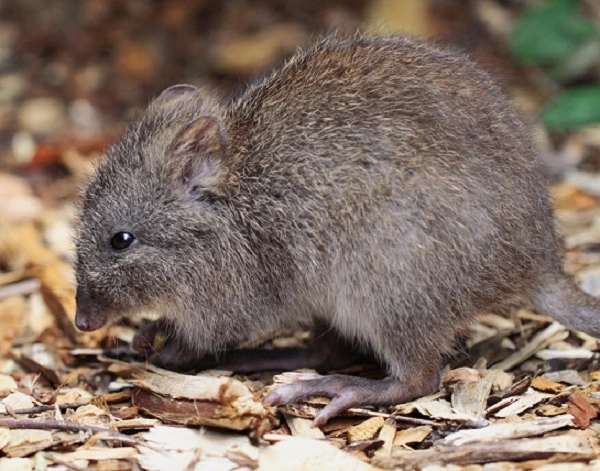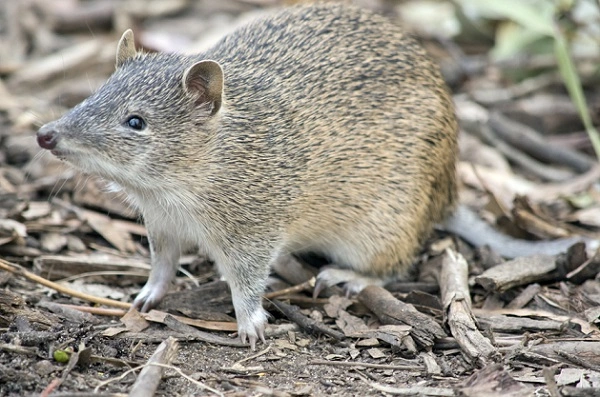There’s a new rat in town, and it’s aptly named the bandicoot. This little guy is making a big splash thanks to its adorable features and unique biology. Keep reading to learn more about this fascinating creature!

Bandicoot Description
Bandicoots are small to medium-sized marsupial mammals that are found in woodlands and forests throughout Australia, Indonesia, and New Guinea. They range in size from the common Bandicoot, which is about the size of a rabbit, to the Giant Bandicoot, which can be up to twice the size of a common Bandicoot. Bandicoots have short fur that is usually brown or grey in color, and they have long tails that they use for balance when they are running through the trees. Bandicoots are omnivorous animals, and their diet consists of insects, spiders, small mammals, and fruits. Bandicoots are shy animals that are most active at night, and they generally live alone or in pairs. Although they are not considered to be endangered animals, Bandicoots are threatened by habitat loss and by predators such as foxes, cats, and dogs.
Bandicoot Habitat
Bandicoots are found throughout Australia, New Guinea, and Indonesia in a wide variety of habitats. They are most commonly associated with open woodlands, but can also be found in rainforests, heathlands, and even desert regions. Bandicoots are solitary animals, and only come together to mate. Females give birth to litters of up to eight young, which they raise in nests made from grasses and leaves. Bandicoots have a relatively short life span, with most individuals only living for 2-3 years in the wild. However, they have been known to live for up to 9 years in captivity. Bandicoots are important animals in the Australian ecosystem, and play a vital role in controlling the populations of insects and other small invertebrates.
Bandicoot Diet
Bandicoots are omnivorous animals, and their diet depends on the species and the availability of food. Some bandicoots feed mainly on insects, while others eat mostly plants. Bandicoots also consume a variety of other small animals, including lizards, snakes, and rodents. Bandicoots play an important role in the ecosystem by helping to control populations of pests and other animals. Bandicoots are also hunted by humans for their fur.

Bandicoot Size
Bandicoots vary in size, with the smallest species, such as the dwarf bandicoot, measuring just 10cm from nose to tail. The largest species, the southern brown bandicoot, can reach up to 60cm in length. Bandicoots are typically solitary animals, although they may live in pairs or family groups. They are nocturnal creatures, spending most of their time foraging for food. Bandicoots are omnivorous, eating a diet of insects, fruits, and vegetables. Although they are not endangered, several species of bandicoot are considered threatened due to habitat loss and predation by introduced animals such as foxes and cats.
Bandicoot Lifespan
Bandicoots typically live for around two to three years in the wild, although captive animals have been known to live for up to eight years. They are mainly nocturnal creatures, spending their days resting in burrows or dense vegetation. Bandicoots are omnivorous animals, feeding on a variety of plants and animals. Their diet includes fruits, seeds, insects, spiders, lizards, and small mammals. Bandicoots play an important role in the ecosystem by dispersing seeds and controlling invertebrate populations. Sadly, these fascinating animals are under threat from a range of predators, including foxes, cats, and dogs. With habitat loss also playing a role in their decline, it is important that we do what we can to protect bandicoots and their habitats.
Bandicoot Behavior
Bandicoots are nocturnal marsupials native to Australia and New Guinea. They are generally solitary animals, but may come together to mate or forage for food. Bandicoots are omnivorous, eating both plants and animals. Bandicoots are timid animals which are rarely seen by humans. However, they play an important role in the ecosystems of their native habitats, as they help to control populations of pests such as rodents and insects.
Bandicoot Speed
Bandicoots also have a very high top speed, and can run up to 30 miles per hour. This combination of speed and jumping ability makes them very difficult for predators to catch. Bandicoots typically live in wooded areas, and their diet consists mostly of insects and small vertebrates. In some parts of the world, bandicoots are considered to be pests, as they can damage crops and carry diseases. However, they are also popular pets in many households. Bandicoots are relatively low-maintenance animals, and can make enjoyable companions for people of all ages.
Bandicoot Hunting
Bandicoot hunting is a popular sport in many parts of Australia. Bandicoots are small, marsupial animals that are natives of the continent. They are most active at night, and their diet consists mainly of insects and other small invertebrates. Due to their nocturnal habits and their lack of camouflage, bandicoots are relatively easy to spot and catch. However, they are also quite speedy, making them a challenging target for hunters. The best time to hunt bandicoots is during the summer months, when they are most active. In order to increase your chances of success, it is important to know where they are most likely to be found and what time of day they are most active. Bandicoot hunting can be a thrilling and rewarding experience, and with a little knowledge and preparation, you can be sure to bag yourself a trophy-worthy catch.
Conclusion
The bandicoot rat is found in Southeast Asia and parts of India. It has pink fur, long whiskers, and a tail that is shorter than its body. Bandicoot rats are omnivorous and eat both plants and animals. They live in burrows underground but can also be found in trees. These interesting creatures have many adaptations that allow them to thrive in their environment, including strong claws for digging and running, excellent hearing and vision, and the ability to swim well. What makes the bandicoot rat so fascinating, however, is its behavior. This little rodent is one of the few species of mammals that exhibit bipedal locomotion (walking on two legs).
Frequently Asked Question

